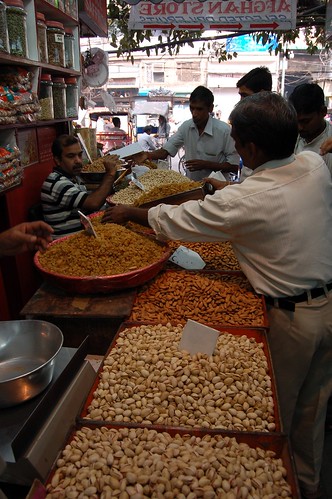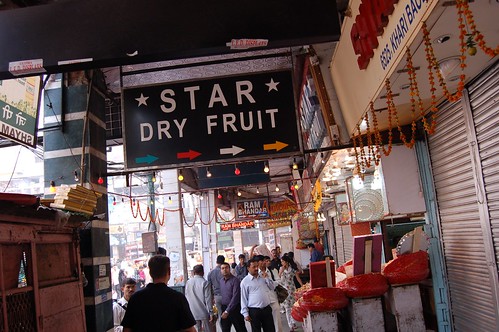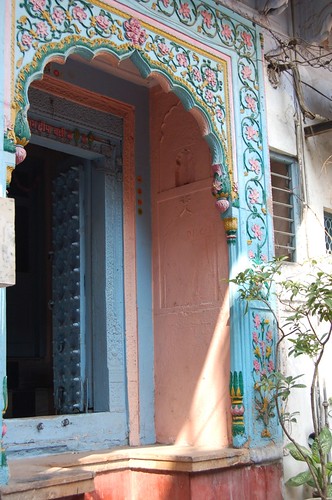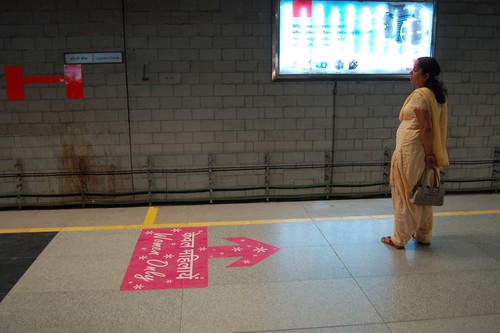When we lived in Laos, I often cycled to to the countryside for a genuine slice of life. Saturday morning Tony and I decided to seek out a slice of life in Old Delhi, but we left the pedaling up to our new buddy Iqbal.
Our apartment is in a relatively quiet suburb of NEW Delhi, which is quite distinct from OLD Delhi. I am generally an adventurous traveler, but I have to admit the trailer for “Slumdog Millionaire” (yes, I’m the only person on the planet who hasn’t seen the whole film) had me feeling squeamish. Plus, my friend Sandra ventured into the bowels of Old Delhi last week and returned a bit traumatized by the smells. If the street kids banging on my taxi windows in NEW Delhi make me uncomfortable, imagine the power wielded by the throngs of beggars in OLD Delhi. Thus, we’ve lived in this city for three months, and we hadn’t ventured far from home … till Saturday, when we took the metro into the city.
Sidebar: This was also my first time on the Delhi Metro! Easy, clean, cheap … but unfortunately, no stops close to our house. Still, I would rather take a short taxi ride to the metro stop and stand in an air-conditioned metro car for 40 minutes than suck fumes in a sweltering taxi boxed in by stagnate traffic.
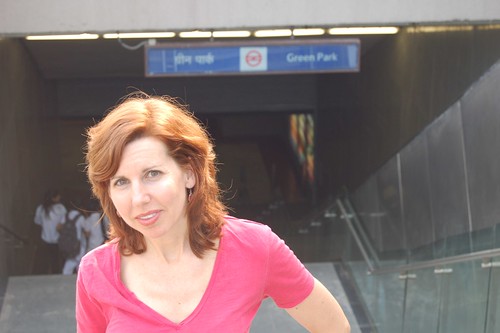
We took the metro to Chandni Chowk, a major street that runs through the walled city of Old Delhi, and met Iqbal the Rickshaw Driver in front of the Sikh Temple. He was dressed for success in a pinstriped shirt and brown slacks, and he barely broke a sweat pedaling us through twisted, crowded, colorful alleys. With no real agenda, we let Iqbal call the shots.
In the early morning, the streets were busy but not packed. He maneuvered his rickshaw through the traffic and parked at the Khari Baoli – a street featuring Asia’s biggest wholesale spice market, which dates to around 1650. We climbed out the rickshaw and up several flights of stairs for a bird’s eye view of the adjacent Fatehpuri Mosque. On the roof, huge vats of rice and curry cooked over an open fire to be sold by street vendors later in the day. (Note to self: Don’t eat street curry.)
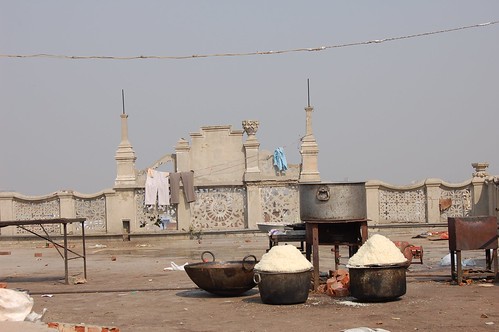
Wandering around the ancient market, we posed with bursting burlap bags of chili peppers, and I experienced a massive convulsive sneezing fit.

Back at street level, we checked out the wares of various vendors, but our cupboards are presently well-stocked with dried fruits and nuts, which are traditional Diwali gifts.
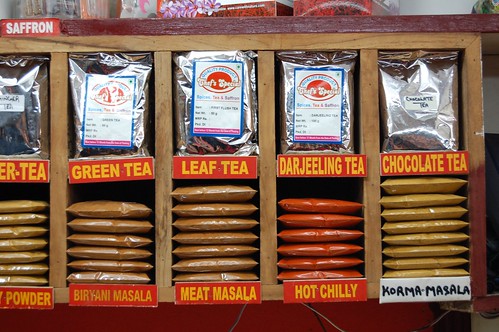
Next, Iqbal steered the rickshaw into the getting-busier passageways and markets branching off Chandni Chowk. Rocking over broken pavement and swerving around pedestrians, all sorts of vehicles and goats, we struggled to capture our experience in photos. I loved the sari shop that “deals in ALL KINDS OF FANCY.” Full disclaimer: This slideshow is full of blurry, poorly composed shots, but that’s pretty much how the ride felt.
Here’s a shorter slideshow focusing on the state-of-the-art power lines serving this part of the city.
After pop-a-wheeling down “silver street,” “sari street, “wedding street” and other niche markets, Iqbal pulled over and told us to step out. He heaved the rickshaw over a short barrier and through a doorway to a peaceful alley with brightly painted doorways.
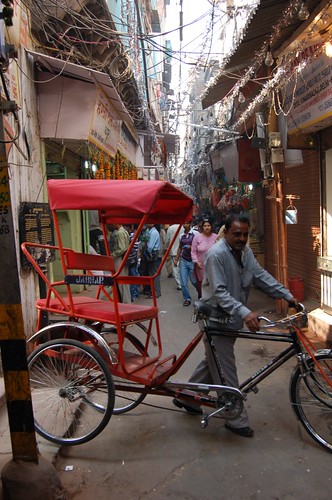
We were visiting a Jain temple. In a city with predominantly Muslim antiquities and a present-day Hindu vibe, it’s fun to stumble upon a fresh perspective. Upon entering the temple, we were handed a slate with the “rules.” One rule was “no photography” … so I couldn’t take a picture of the rules. I do recall that I wasn’t allowed upstairs if I was menstruating, and we had to remove anything leather (so Tony took off his belt). We had to visit the temple sink to wash our hands and rinse out our mouths (I faked that part), as well. Eventually, a priest took us up the steep marble stairs, where an elderly man in a white loincloth used a mortar and pestle to smash a paste of saffron and sandalwood. The priest blessed us with a smear of the paste between our eyes and pointed out the similar smears on all the statues. The paste is one of eight symbolic offerings, which the BBC nicely details in the online article Eightfold Puja.
Like I said, photography was prohibited, which was a shame because for a religion with a strict minimalist tradition, this temple shimmered with gold (not gold leaf, the priest emphasized), silver, carved marble, dazzling mosaics, fine paintings and other photo-worthy decor. Somehow, the guy who writes The Delhi Walla managed to snap pictures throughout the temple. So rather than describe everything, I’ll just oppress my blog envy and refer you to his site.
After making a donation to the temple and tipping our priest, we reboarded the rickshaw and rattled straight into a traffic jam. We baked in the sun with a car-horn cacophony for about 10 minutes before telling Iqbal to skip the Jama Masjid, the largest mosque in India, which we’ll be sure to visit another day. Eventually, he returned us to the metro. On the morning trip, I had joined Tony in the unisex car. The afternoon trains, however, were packed, so I opted to avoid the lewd looks and potential gropes from creepy men and instead threw my hat in the ring with the ladies. I happily hopped aboard the “Women Only” car, and the glass doors trapped me inside with an ominous hiss before I realized that with ladies come babies, whiny toddlers and rambunctious pre-schoolers. Can’t they introduce the “Self-Righteous DINK” car? I would be all over that.
Oh, the smells? Unremarkable. In fact, other than the sneeze-inducing chili dust, we mostly inhaled mouth-watering scents wafting out of restaurants. The beggars? Not at all scary. I gave a bag of cashews to two little girls hanging out at the metro station because they were cute, but nobody harassed us. Maybe we were just having a lucky day.

